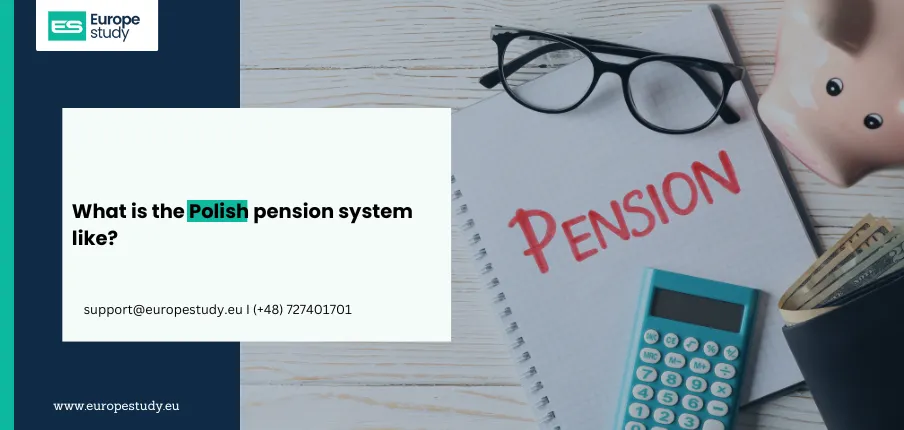
What is the Polish pension system like?
Poland's pension system has evolved over the years, balancing state responsibility with private savings. With demographic pressures and economic reforms shaping its future, it’s crucial for employees, employers, and residents to understand how the system functions. In this guide, we break down the structure, benefits, and ongoing changes to Poland’s pension framework.
Overview of the Pension Structure in Poland
Poland operates a multi-pillar pension system, combining public insurance, mandatory private accounts, and voluntary retirement savings. These pillars are designed to provide a sustainable income after retirement while encouraging long-term financial planning.
Pillar I: The Public Pension System (ZUS)
The core of the system is administered by the Social Insurance Institution (ZUS). It is based on a notional defined contribution (NDC) model, where each worker’s contributions are recorded in a virtual account, and the final pension amount depends on total contributions and life expectancy at retirement.
Key Features:
- Retirement age: 65 for men, 60 for women.
- Minimum contribution period: 20 years for women and 25 years for men to qualify for a guaranteed minimum pension.
- Contribution rate: Approximately 19.5% of gross salary, shared between employer and employee.
- Pension formula: Based on total contributions, accrued capital from pre-reform periods, and average life expectancy.
This system operates on a pay-as-you-go basis, where current workers fund current retirees.
Pillar II: Open Pension Funds (OFE)
This pillar includes mandatory private accounts invested in capital markets. Originally part of the 1999 reform, OFEs were designed to provide a second source of pension income.
Key Details:
- A portion of the social contribution is allocated to these private funds.
- These funds are managed by licensed financial institutions.
- Participation has declined due to reforms that redirected contributions back to ZUS, but existing accounts remain active for those who opted in.
Pillar III: Voluntary Occupational Schemes
This includes workplace-based pension schemes like Employee Capital Plans (PPK) and Employee Pension Programs (PPE).
Employee Capital Plans (PPK):
- Auto-enrollment for most employees aged 18–54.
- Contributions: Minimum 2% from the employee and 1.5% from the employer (with optional additional contributions).
- Government incentives: A one-time welcome payment and annual top-ups.
Employee Pension Programs (PPE):
- Voluntary schemes offered by employers.
- Contributions can be up to 7% of the employee’s gross salary.
- Subject to favorable tax treatment.
These schemes are intended to supplement public pensions and encourage saving from an early age.
Pillar IV: Individual Retirement Accounts
For those looking to boost their retirement security, two voluntary, individual schemes are available:
IKE (Individual Retirement Accounts):
- Contributions are made from post-tax income.
- Earnings are exempt from capital gains tax upon retirement (if funds are held to retirement age).
IKZE (Individual Pension Security Accounts):
- Contributions are tax-deductible, reducing annual taxable income.
- Withdrawals are taxed at a flat, favorable rate at retirement.
Both schemes offer flexible savings and are accessible through banks, investment funds, and insurance companies.
Additional Pension Benefits
To support retirees and address social needs, Poland provides additional pension-related benefits:
13th and 14th Pensions:
- The 13th pension is an annual bonus equal to the minimum pension amount, paid to all eligible pensioners.
- The 14th pension is means-tested, offering extra financial support to those with lower pension incomes.
These bonuses have become a permanent fixture in the pension landscape.
Widow’s Pension Reform:
Starting from July 2025, surviving spouses can receive 100% of their own pension plus 15% of the deceased partner’s pension. This amount is expected to increase in future years, improving financial security for widows and widowers.
Centenarian Benefit:
Poles who reach the age of 100 are eligible for a special monthly allowance. This benefit, which was previously granted on a discretionary basis, has been formalized to support longevity.
Special Regimes for Certain Professions
Some professions qualify for preferential pension conditions, such as:
- Uniformed services (e.g., police, military)
- Miners
- Farmers
- Performing artists like ballet dancers, who may retire earlier due to the physically demanding nature of their work
Special pensions for these groups often allow for early retirement and higher benefits, but they place a significant fiscal burden on the system.
Challenges Facing the Polish Pension System
While the structure of the pension system is broad and inclusive, it also faces a number of serious challenges:
Demographic Pressure
- Poland’s aging population means fewer workers are supporting more retirees.
- The ratio of workers to pensioners is shrinking, raising questions about long-term sustainability.
Low Participation in Voluntary Schemes
- Despite incentives, participation in Pillar III and IV schemes remains relatively low.
- Financial literacy and trust in investment products remain areas for improvement.
System Complexity
- Frequent reforms and policy shifts have created confusion and uncertainty.
- Workers often find it difficult to track how different components of their pension will come together at retirement.
Opportunities and Reforms Ahead
To ensure the system remains robust and equitable, future reforms are likely to focus on:
- Raising awareness about the importance of voluntary savings.
- Adjusting retirement ages in line with increasing life expectancy.
- Improving benefit adequacy, especially for those with incomplete work histories or low lifetime earnings.
Poland is also exploring digital pension tracking, allowing individuals to monitor all pillars of their pension in one place.
Final Thoughts
Poland’s pension system blends public and private mechanisms to secure retirement income. It offers flexibility and additional benefits, but it also requires proactive participation and long-term planning—both by individuals and by the government. Understanding how each pillar works and staying informed about changes can help citizens make the most of the system and prepare for a stable future in retirement.





